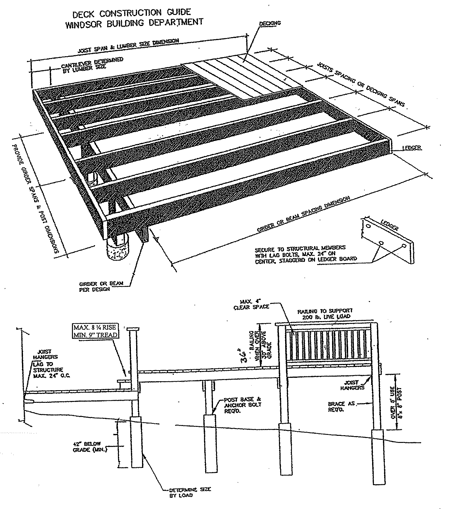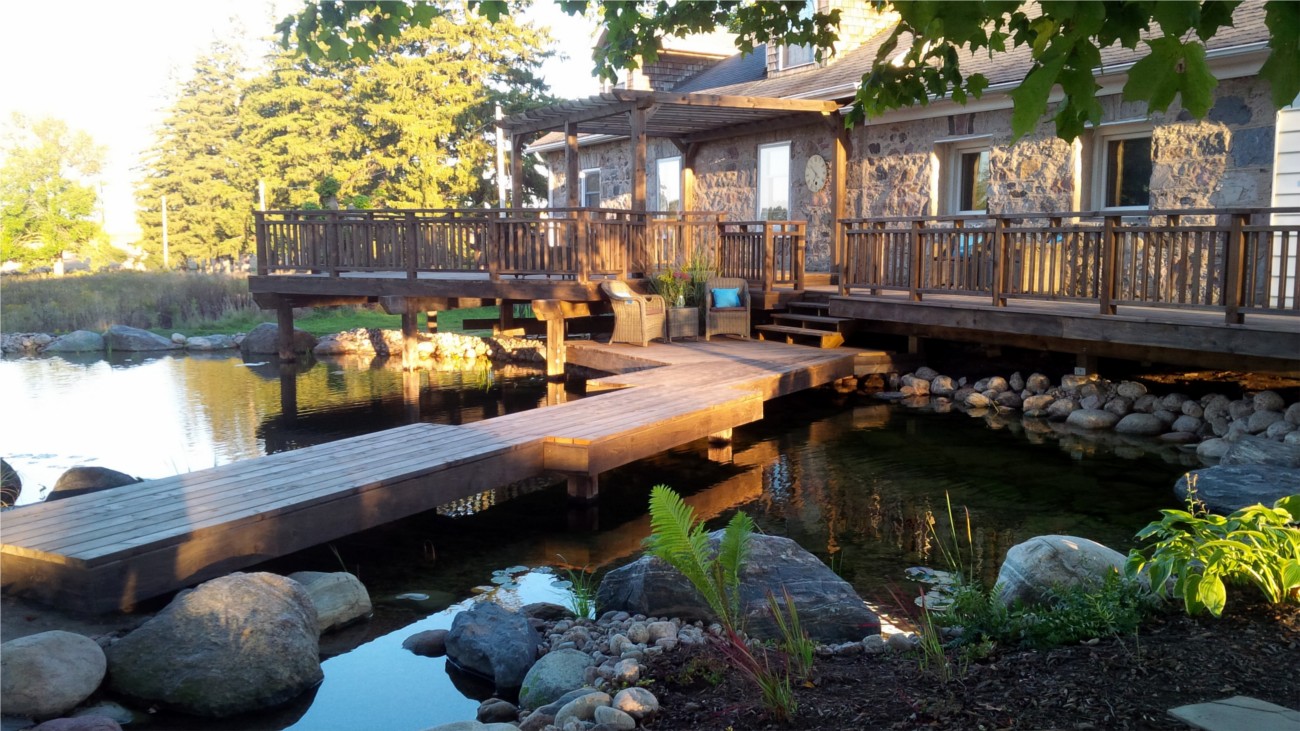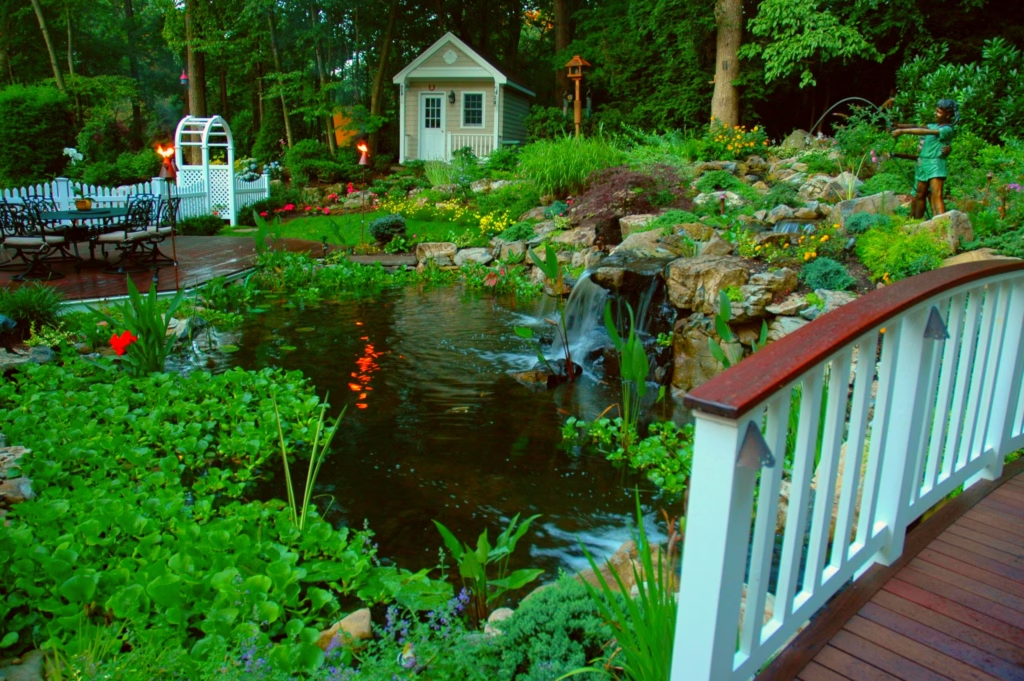Building a pondside deck enhances your outdoor experience, offering a space for relaxation and enjoyment. As you gather by the water, a well-constructed deck becomes a focal point that invites you to appreciate the natural beauty of your surroundings. However, constructing a deck near a pond comes with specific challenges, particularly regarding safety, durability, and environmental impact. This guide provides you with essential information on designing, constructing, and maintaining a durable, visually appealing pondside deck. You will learn about suitable materials, necessary safety features, installation techniques, and maintenance practices that will help your deck withstand various weather conditions and remain attractive for years to come.
How to Create a Safe and Beautiful Pondside Deck
A pondside deck offers more than aesthetic beauty; it provides a functional area to enjoy the sights and sounds of nature right in your backyard. When planning your deck, think about its location relative to the pond and your home. A design that harmonizes with the landscape can significantly enhance your outdoor space.
You should prioritize safety by selecting materials that reduce slip hazards, especially in wet areas. Slip-resistant decking is crucial for minimizing accidents near water. Additionally, consider the environmental impact of your deck’s design and materials. Utilizing weather-resistant products can help limit disturbances to the pond ecosystem while ensuring that your deck maintains its appearance and structural integrity over time.
This image features a completed pondside deck that harmonizes beautifully with the surrounding nature, showcasing the potential of a well-designed outdoor space. (Source: Deck and Patio)
Choosing the Right Materials for Longevity and Safety
Choosing the right materials for your pondside deck is essential for its longevity and overall safety. Various options are available, each with its distinct advantages and disadvantages.
Composite decking remains a popular choice due to its weather resistance, low maintenance, and aesthetic appeal. Fully-capped composite products are designed for damp environments, meaning they resist warping and rotting over time. Alternatively, PVC decking offers a waterproof option that won’t leach harmful chemicals into the surrounding water.
Pressure-treated lumber may seem appealing because of its affordability, but it raises environmental concerns because of the chemicals used in its treatment. If you choose this material, make certain it is rated for ground contact and plan for regular sealing to mitigate chemical leaching.

This photo displays different decking materials, emphasizing their variances and helping you understand their installation benefits. (Source: Decks.com)
Planning with Purpose: Safety and Building Codes to Follow
When constructing a deck next to a pond, it’s vital to understand local building codes and ensure you have the necessary permits. Most regions require a building permit for deck construction, particularly if your deck attaches to your home or if it’s elevated.
For instance, in New York, a deck must support a load of 40 psf, and footings should extend at least 42 inches below the ground. You’ll also need to pay attention to setback regulations, which may limit how close you can build to your pond. Consulting your local planning department before starting your project helps you stay informed about regulations that may affect your construction.

This infographic summarizes safety and building codes for deck construction, making it easier for you to grasp necessary regulations. (Source: Town of Windsor)
Step-by-Step Guide to Building Your Pondside Deck
Following a clear, step-by-step approach is important for successfully constructing your pondside deck. Here’s a structured outline to guide your DIY project:
-
Prepare the Site: Start by clearing the area where the deck will be located. Ensure the ground is level and create a slight slope of about 1% away from the pond for drainage.
-
Build the Framework: Construct the supporting structure using posts and beams that align with your design. Be sure to use stainless steel fasteners to resist corrosion, especially in a wet environment. Apply joist tape to the top of the wooden joists to prevent moisture damage.
-
Decking Installation: Lay down your chosen decking material, making sure to leave gaps of at least 1/4 inch between boards to allow for drainage and airflow. If you’re using composite materials, consider employing a hidden fastener system for a polished look.
-
Finishing Touches: Complete your project by securing railings and steps as necessary, ensuring they meet local building codes and safety standards.

A visual guide featuring steps and terminology related to deck construction will help you follow along. (Source: HubSpot)
Maintaining Your Deck for Longevity and Safety
Regular maintenance is crucial to prolonging the life of your pondside deck while ensuring safety. Aim to conduct inspections at least twice a year—before and after wet seasons—to catch any issues early.
Pay close attention to signs of moisture damage and check for loose fasteners. Keeping your deck clean prevents mold and algae build-up, particularly in humid conditions. With wooden surfaces, apply a water-repellent sealant annually, especially if you’re using pressure-treated lumber.
By maintaining proper drainage and ventilation, you can minimize moisture accumulation, which is vital for the deck’s structural integrity.

This image showcases the effectiveness of deck cleaning by presenting before-and-after situations, reinforcing the necessity of maintenance. (Source: DeckMax)
Innovative Design Ideas for a Harmonious Pondside Environment
Integrating your deck with the surrounding environment can create a beautifully cohesive outdoor space. Consider incorporating natural stone features alongside your decking for a visually appealing blend.
Floating platforms made from marine-grade plywood can serve as islands for aquatic plants, enriching the pond’s habitat. Alternatively, small bridges made from composite decking can provide practical access over water while enhancing the landscape’s charm.
Additionally, modular planters constructed from plywood can add visual appeal and functionality. They allow for creative plant arrangements in and around your deck.

A stunning depiction of innovative deck designs around a pond evokes creativity and harmony with the environment. (Source: Quiet Nature)
Safety First: Essential Tips for Outdoor DIY Projects
Safety should be a primary concern when undertaking any DIY decking project. Be sure to wear the appropriate gear, such as gloves and safety goggles, to protect yourself from potential injuries. When working near water, slip-resistant footwear is vital.
Establishing safe boundaries is advisable, particularly if children or pets are nearby. Understanding local wildlife can also help reduce risks associated with encounters while working outdoors.
Ensure that railings are securely attached and meet local safety requirements. Additionally, utilizing slip-resistant surfaces on your deck is crucial to providing better traction in wet conditions.

An informative infographic illustrates essential safety tips for outdoor DIY projects, proving valuable as a guiding resource. (Source: Creative Systems)
Conclusion
Creating a pondside deck can be both a fulfilling and practical project that enhances your outdoor environment. By choosing the right materials, understanding relevant safety regulations, and incorporating innovative design ideas, you can build a beautiful and durable deck that stands the test of time. Regular maintenance will ensure the safety and longevity of your deck for years to come. With the insights shared in this guide, you’re now well-prepared to embark on your DIY journey and establish a space where you can relax and connect with nature.


